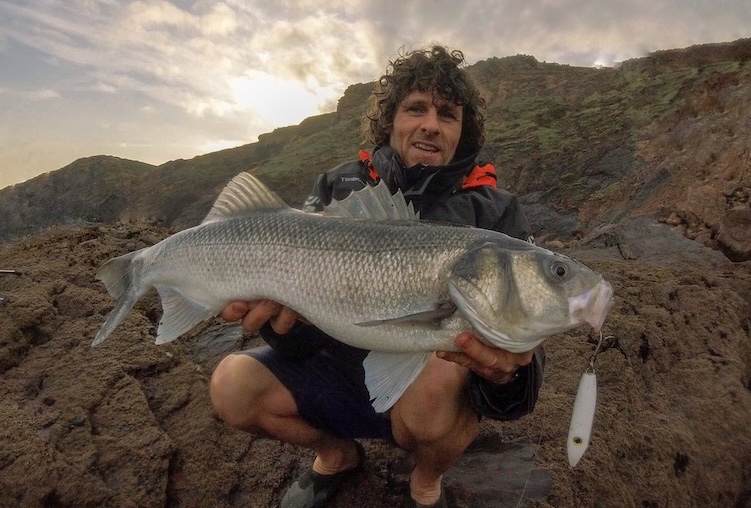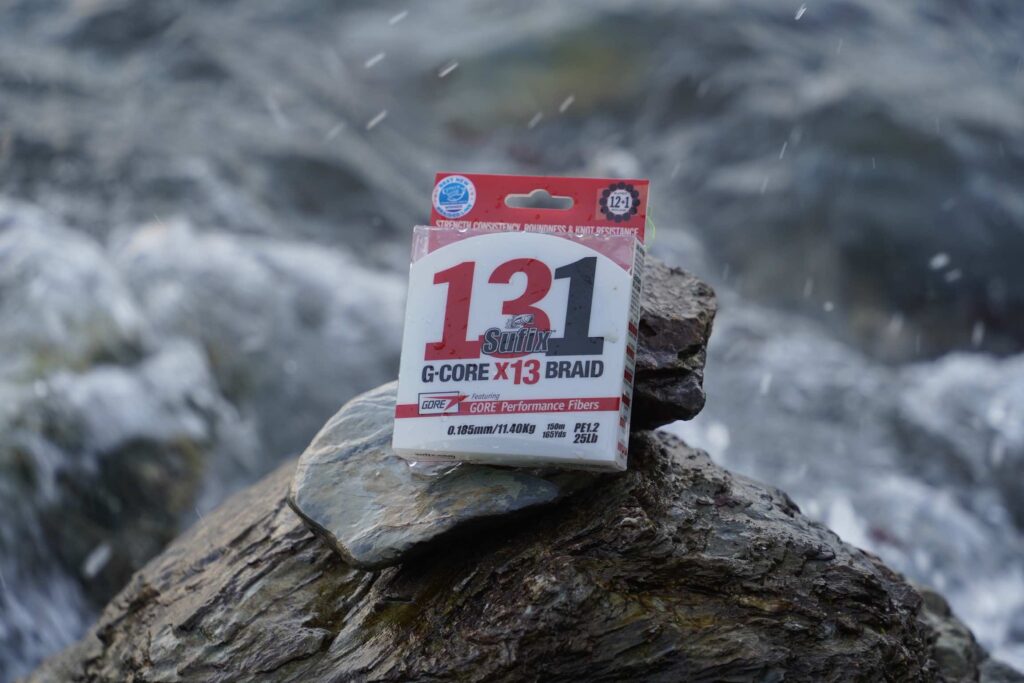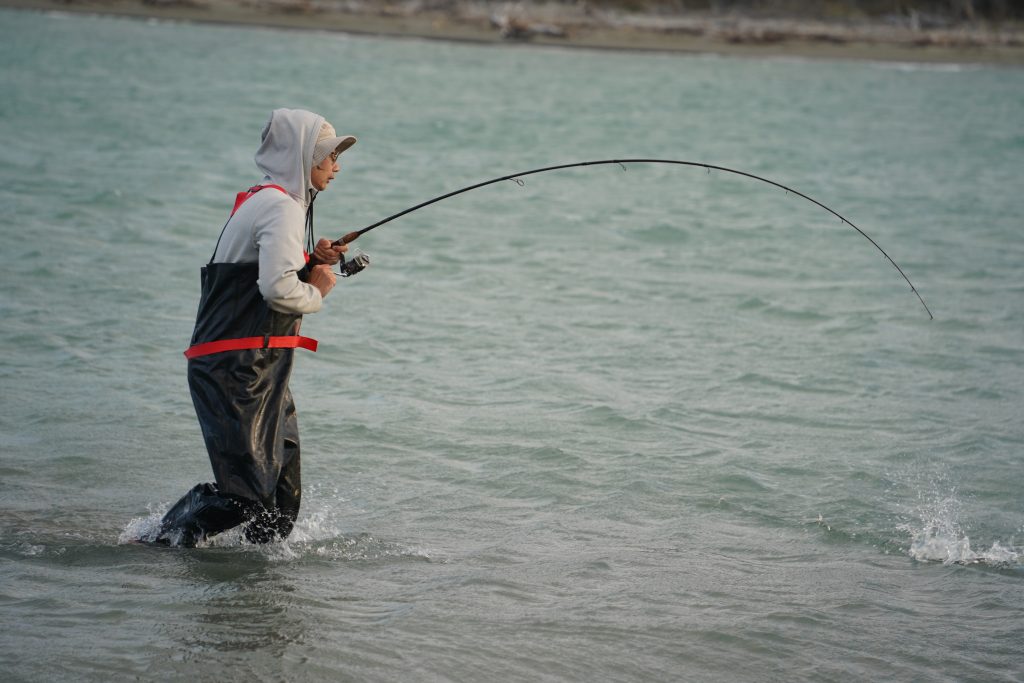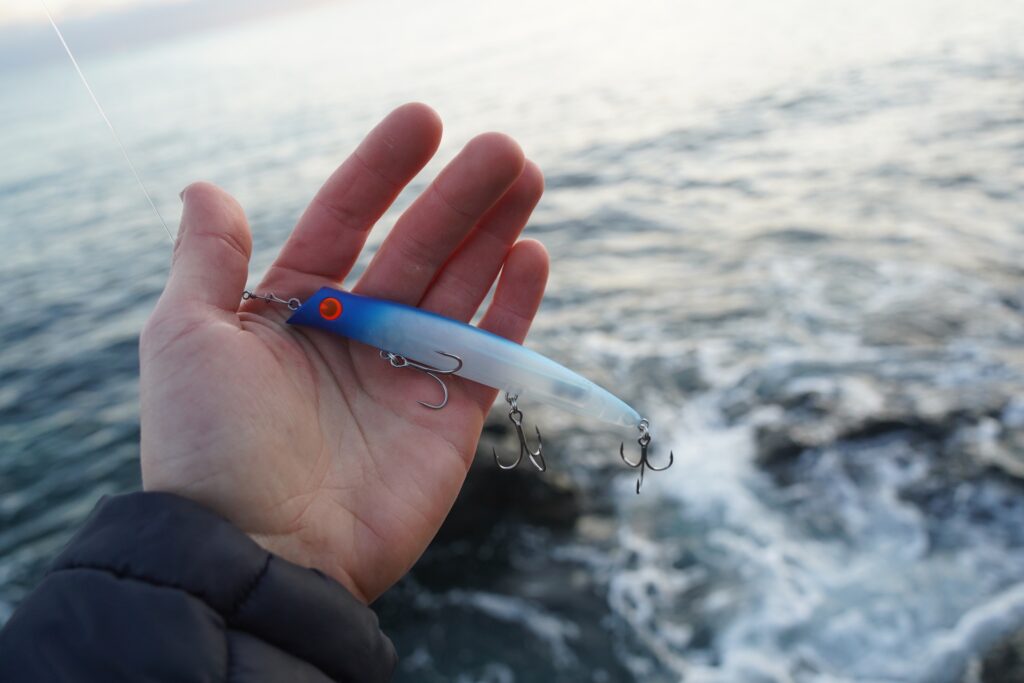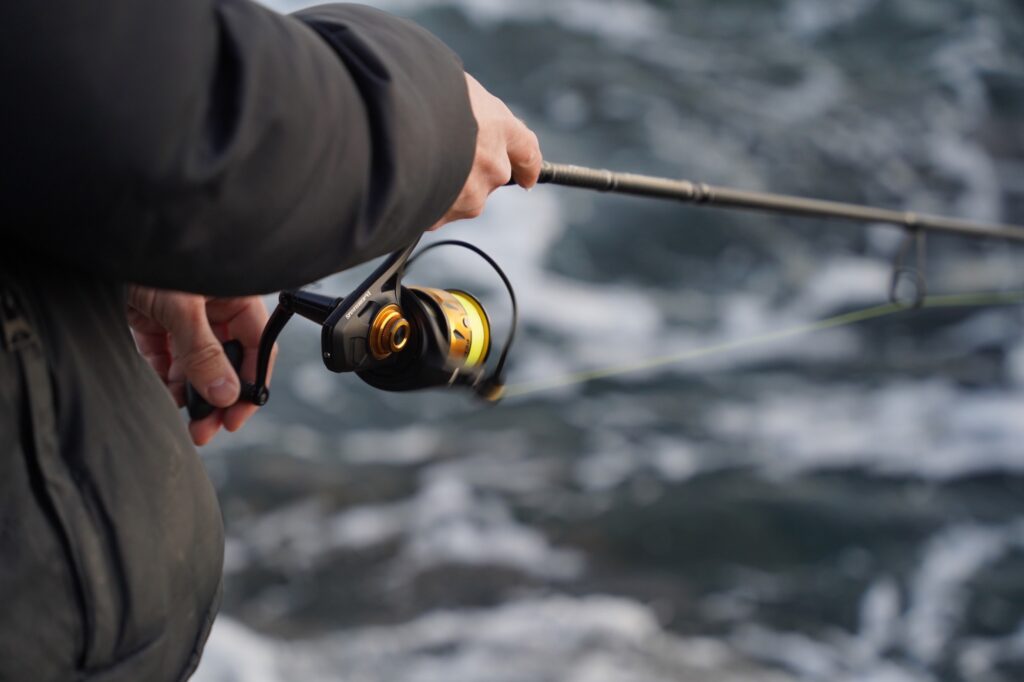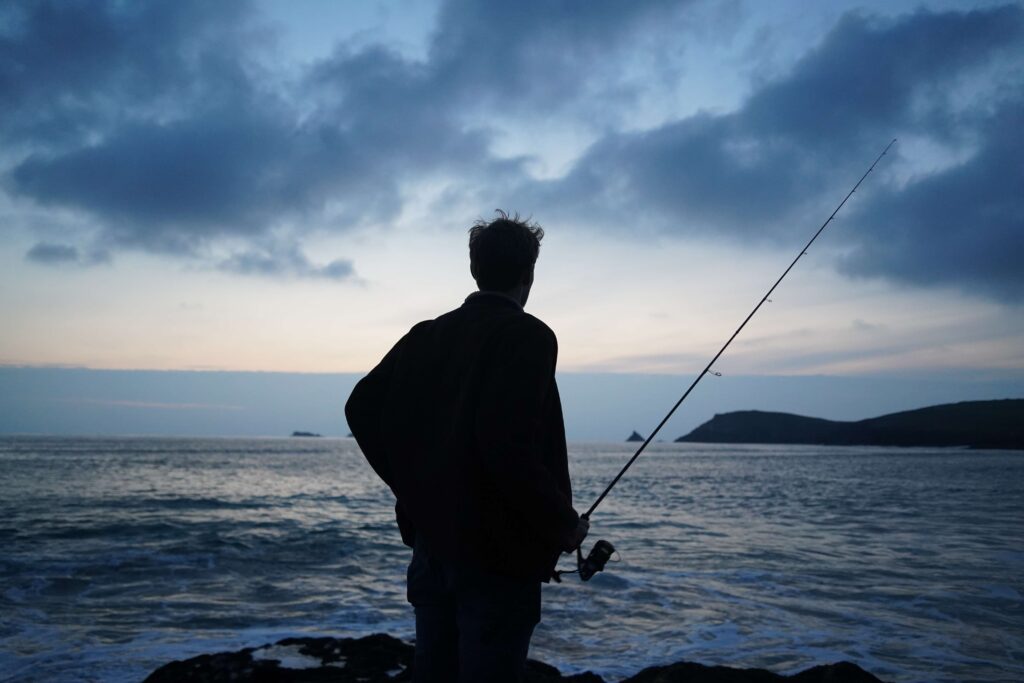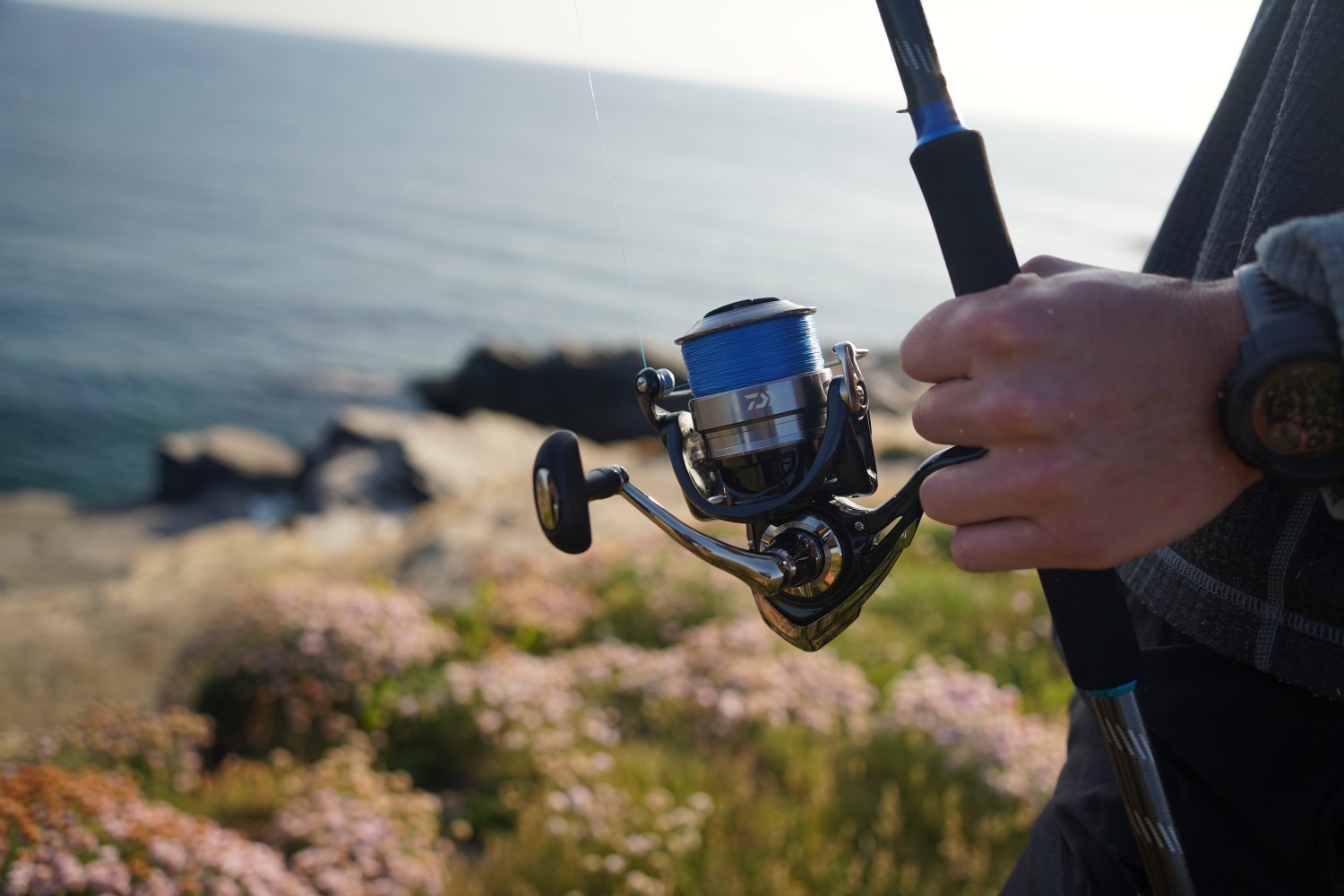
Lure fishing set ups, everything you need.
In this article, I will recommend specific rods, reels, lures and lines to create a top-knotch lure fishing set up. Crucially, we will look at which reels go well with which rods and which lines etc. Then, I’ll explain why each of these products has been recommended in detail, which will help you choose your next lure set up even if you don’t go for one of our recommended combos. We will also go through everything you need and how to put it all together to get fishing if it’s your first time in a while…
Everything you need for a killer lure fishing set up
The rods below all have a maximum casting weight of between 35-42g and are between 8-9ft. The reels are size 2500-4000 depending on the reel brand and the rod it’s going on. A set up with these ratings is the most versatile if you are buying one rod for bass, big perch, small pike, mackerel, inshore boat fishing – anything. If you’re going to buy multiple specialist set ups, this would likely be your bass set up. We’ve tested a lot of rods, and the rods are selected based on our experience and the rods available at veals tackle shop, which offers free delivery over £85 and reliable customer service.
Choosing your lure rod
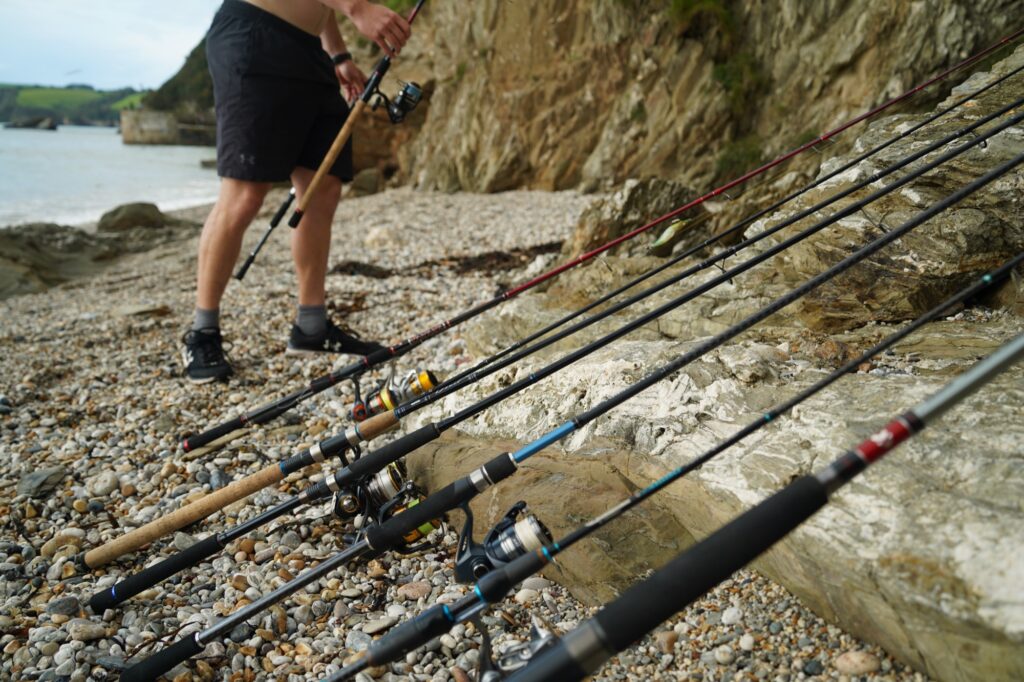
The best reels for the above rods (pay attention to the exact sizes)
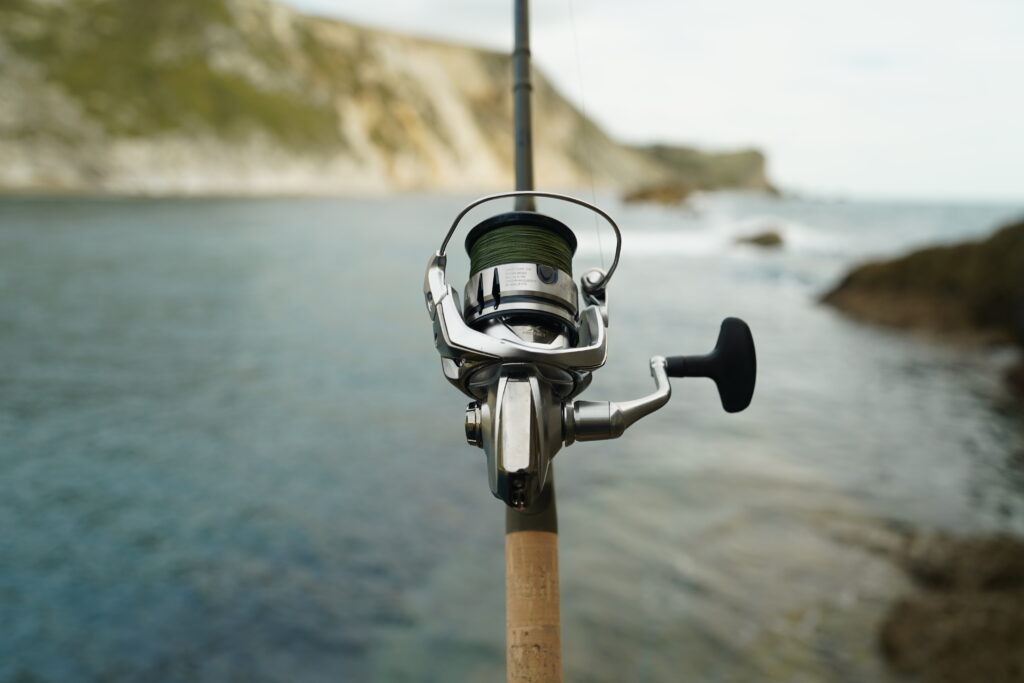
Mainline to go on the reels above
Getting a quality braided line means much further casting, superior bite sensitivity and improved connection to your lure’s action. It heightens the whole experience compared to using monofilament (the see-through stuff). It’s also much stronger at the same thickness.
Cheap braids cause a huge amount problems. To save money, you can use flourocarbon mainline straight through and fish with soft plastics instead of plugs / metal lures that increase the chance of break-offs. Whatever you do, avoid cheap braids, they ruin everything.
It’s common to need a refresher on how to set up your line on your reel. It’s easier to explain over a video. First, you’ll reel on some backing line. You’ll then tie your mainline to that and spool it on, until the reel is almost full, but still with a bit of ‘lip’ visible. Then, you’ll tie on about 1m of leader to this mainline. You can then tie on a lure clip for quickly changing lures or tie your lure directly to the end of your leader.
With a collection of lures for the above set up:
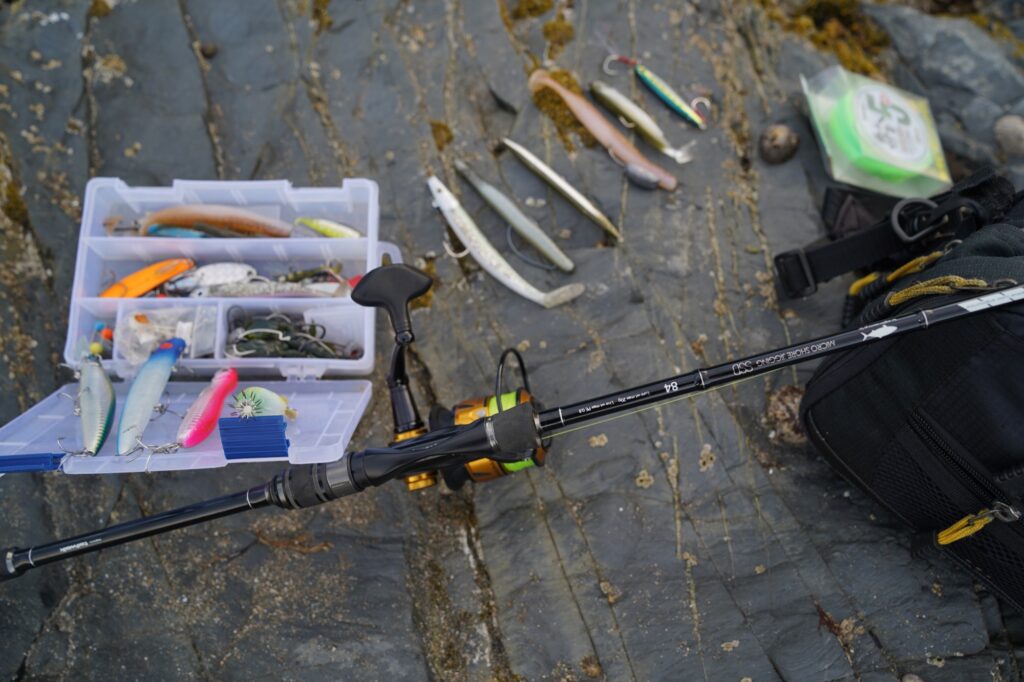
Handy Lure Fishing Accessories
- Disgorgers for unhooking fish (100% essential, some fish are impossible to unhook without them. Also prevents you from hooking yourself, which is easy to do especially with treble hooks).
- Savage Gear Tackle Boxes
- A tackle bag – better for balance on the rocks traditonal box
- Savage Gear Size 8 lure clips for changing lures quickly
Done. That sets you up for anything, with pre-tested gear.
You cannot go wrong with the above. Veals has free postage over £85 and great customer service. If you need further help from fishmag getting set up, email me at [email protected]. Just let me know what your specific use case is for the set-up.
Which casting weight and length lure rod to buy? This depends where you’re fishing.
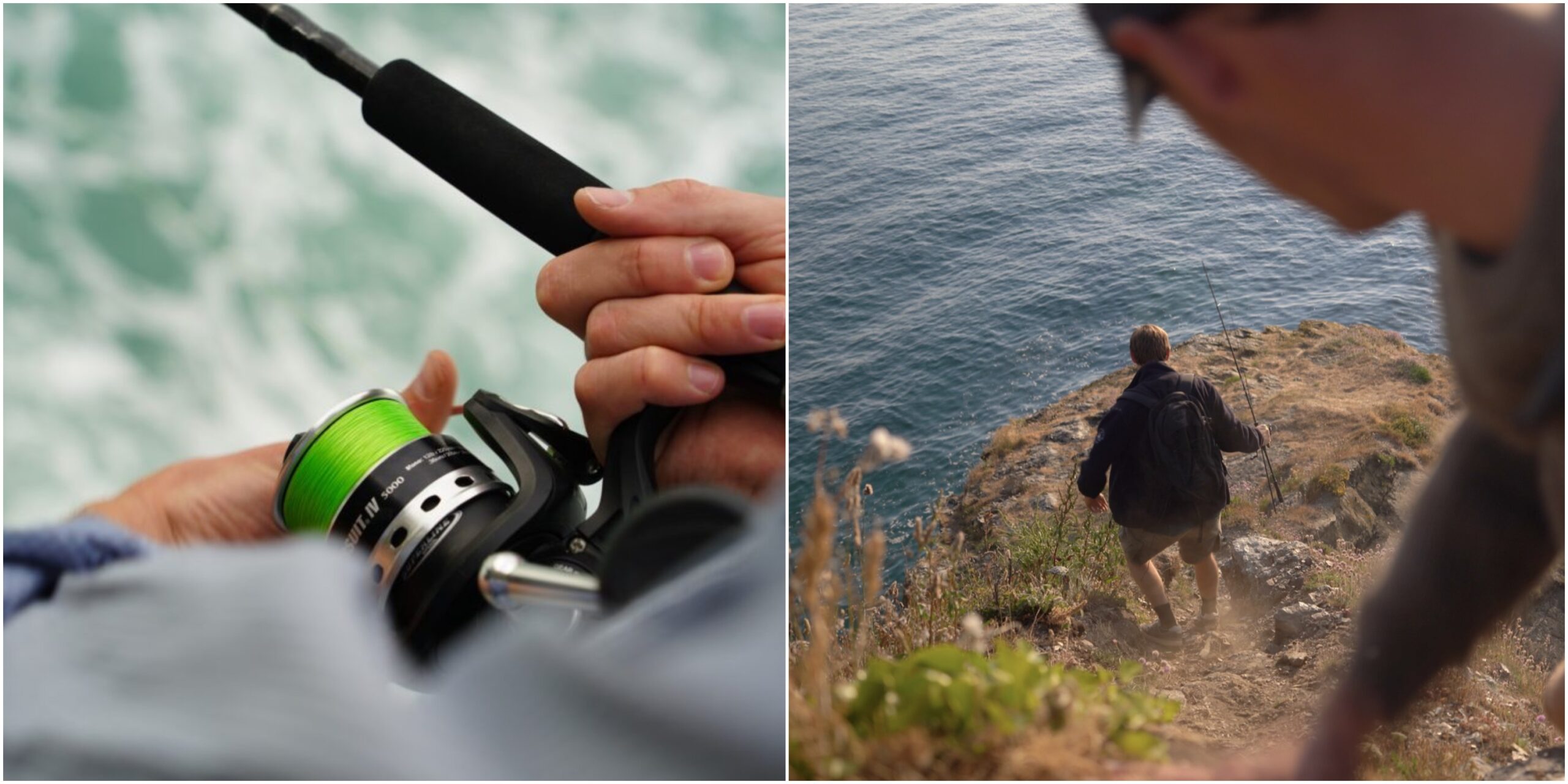
For exposed coasts, shallow beaches, large open reservoirs or lochs – 9-10ft
If you are fishing on exposed, open coastlines or on shallow beaches, longer rods are useful. If you’re fishing in surf it can allow you to have more distance between yourself and a churning sea, which makes it safer. It allow allows you to cast significantly further, which can be essential if you’re fishing a shallow beach mark where you need to cast just beyond the waves. If you’re fishing in a loch or large lake, you may also want a longer cast. For river fishing for sea trout, it’s also handy as it can help you keep lures more centrally positioned in a river and help you keep fish away from the bank and its snags.
A recommended longer rod would be the 10ft Nebula 12-42g. You can still pair this with the 3000 size reel and all the other kit listed above, as it has a light blank.
For sheltered rocky coasts, harbour wall fishing and ponds – 8-9ft
When the sea is calm, you can get closer to the water safely. If you’re fishing ponds with trees hanging over them, a longer rod is a nuisance. If you’re fishing for wrasse close to your feet, a shorter rod gives you more manoeuvrability – it’s not ideal to be trying to steer a charging wrasse at your feet with a 9ft rod. On harbours, a rod over 9ft becomes a nuisance and often you’re fishing around your feet anyway. A shorter rod gives you more control over how you work your lure and significantly improves casting accuracy, so for closer-quarters fishing it’s better to have something shorter. It’s also a lot nicer to work surface lures with a shorter rod, since your rod is pointed down towards the water, it means you can twitch left and right without dipping your rod in the water!
What about casting weight?
Getting the right casting weight is simple.
For trout & perch, no heavier than 25g and many will opt to go as low as 10-15g at the maximum end.
For bass fishing, a max of 28-50g.
For pike fishing, a max of 60-150g-ish (there’s a lot of variance because of bait finesse rods and the sometimes very heavy hard lures involved).
For a more traditional sea spinning outfit – 60-90g
For big sea trout in rivers – about 40-60g max
But what if you don’t want a different rod for every species?
Around 40g is the answer.
If you are buying a different rod for each species or style of fishing, then you would go for a whole range. We would recommend buying one rod for trout, perch, and LRF. This is your super light rod. Then get another for bass which is your mid-weight outfit. Finally, a heavier lure rod for big pike or bass fishing on windy days / very exposed coasts. That’s three set ups.
However, if buying multiple kits means spending less than £300 on each one, we recommend just buying one ‘do it all’ set up. Better to have one killer lure fishing setup than a shed full of crap… Sell it all on facebook marketplace and start fresh if that’s you!
So, what casting weight? 40g. 40g is perfect for bass, you can target most pike in most waters comfortably, you can use it for inshore boat fishing, you can put on casting jigs for mackerel, you can still use drop-shot rigs to fish for perch, or small plugs for trout. You only need to adapt the rigs you’re using and your line to suit the conditions, and you’ve got an all-rounder.
What size reel should I put on that rod?
The challenge of getting the right size reel is harder than it sounds. If you want to keep it simple, in the ‘rods we recommend’ section at the top of this page we have recommended specific reels in exact sizes for each recommended rod based on our testing and what’s in stock at veals. But for more context on how we figured out the best size, read on.
Rods vary by weight, thickness and weight distribution throughout the blank, which affects which specific reel will balance best on it. Realistically, most people would not notice things being ‘off’, but they certainly do notice when everything feels ‘just right’ because the whole experience is a lot smoother. This is why when we take somebody on a guided trip and hand them our gear for that first cast, they often say ‘wow, this is nice kit’. I have seen £1000 set ups that don’t feel good, even though on paper they sound great.
Not only are rods all different, but reel sizes (e.g. 3000 size) are not standard between brands. A Penn 3000 and a Daiwa 3000 are two different beasts. Here is the average weight of a 3000 size reel from each of the big three brands we most trust based on a selection of their reels we put together.
Daiwa: 256g
Penn: 295.4g
Shimano: 227.9g
Those differences may not sound like much, and generally they are not, but some reels are especially heavy and others especially light. These are the ones that cause trouble. Penn Spinfisher 3500 at a hefty 350g or the Daiwa BG Magsealed in 3000 at 315g or the unually lightweight Daiwa Legalis 3000 at 210g.
With a 8-9ft rod casting up to a max of 35-42g, the upper limit on how much a reel can weigh and still feel balanced seems to be around 315g. The only way we could figure this out was to just test a load of different reels on a broad range of rods. The lower end of the weight range seems to depend on the size of the reel. So, for a 3000 size reel, a lower end of 250g will avoid having a reel that feels too light on the rod. If the reel is 4000 size with a bigger spool and handle, it will feel more balanced even if it drops to 230g at the lowest. I am guessing I have lost most people at this point – but if you’re still reading this section, here are some rules of thumb.
Rules of thumb to make sure the reel you buy is best for a rod of 8-9ft casting 35-42g as a maximum:
If the reel is 3000 size, it should be between 250-315g.
If the reel is 4000 size, it should be between 230-315g.
If you have a question, email [email protected]
I’ve got my line – now how do I put it on the reel?
Youtube is the answer here. Just be sure when you buy your rod and reel that you also buy backing line, braided mainline and leader. You need the backing line to pre-fill your spool enough so that the braid will fill the reel properly. This is because braid usually comes in 150-300m spools which typically do not fill a spinning reel to the best level.
How do I connect my leader to my mainline, and how long should it be?
If you are using braid, you need to use a leader – a section of line that connects to your mainline at one end and your lure at the other.
Why do you need a leader?
- Fish can see braid, they can’t see fluorocarbon it’s transparent in water
- Braid snaps when it contacts snags, fluoro is abrasion resistant
- If you get snagged, it’s cheaper & better for the environment to not lose your braid and only lose your (weaker) leader
For trout & perch fishing, use 8lb leader or there abouts. It’s less visible.
For bass fishing and wrasse fishing, around 20lb.
In terms of length, you need to be able to cast without your leader knot having to pass through the top eyelet of your rod. So, about 3-4ft. If you are in a situation where you can go for longer than that, do it. Commercial bass fishermen told us they get better results with longer leaders as they spook help avoid spooking fish.
What’s the best way to attach lures to your line? (split ring vs direct knot vs swivel clip)
We recommend using the following clip rings at the end of your leader.
Savage Gear Size 8
Yuki Rolling Swivel Size 14
Which lures should I buy?
If you have purchased the above kit, look for lures between 7-35g. Most rods will tend to fish best towards the upper end of its casting range, but not quite on it, which is why you may be better off without 40g casting lures even if your rod says it can cast them. This depends on the rod and what feels comfortable with it, but avoid buying a load of lures at bang on the rods max casting weight just in case.
FISHMAG has guides into the best lures for bass and perch which are popular.
Can I use the recommended kit above for boat or kayak fishing?
Yes. If you are inshore fishing or kayak fishing, you can use the above kits, however, go for a rod at the shorter end of the ranges mentioned above (e.g. 7.5ft) for ease of use on a kayak or small boat. The big challenge with boats and kayaks is saltwater resistance in reels. The two approaches are to either buy a seperate reel for boat fishing and accept that it will become ‘crispy’ and corrode over time. OR, you can spend a lot more and get a reel like the Slammer or Daiwa BG Magsealed version, and then you get saltwater resistence. Ignore brands when they advertise their reels as saltwater resistant, you can’t get saltwater resistence except in a few specialist reels such as those mentioned above. If you buy a pretty nice reel, say for £70, and then you take it kayak fishing, unfortunately it may not be nice for long however well you look after it.
Surf fishing for big bass | Grant Woodgate
Surf fishing for big bass with Samson Lures | Masterclass with Grant Woodgate Few people…
The best braided fishing lines, ranked
The best braided fishing lines, ranked We look at the best braids, from the budget…
The best bass rods | Finding your next stick
The best bass rods | Finding your next stick The most common bass fishing setup…
The UK’s Best Bass Lures
The UK’s Best Bass Lures Let’s start by looking at the three bass lures that…
Rock Fishing with Lures
Rock Fishing with Lures You’re sat, perching on a rock below a colony of cormorants….
Lure Fishing UK | Beginners Guide
Lure Fishing UK | Beginners Guide This guide to lure fishing for beginners covers the…

